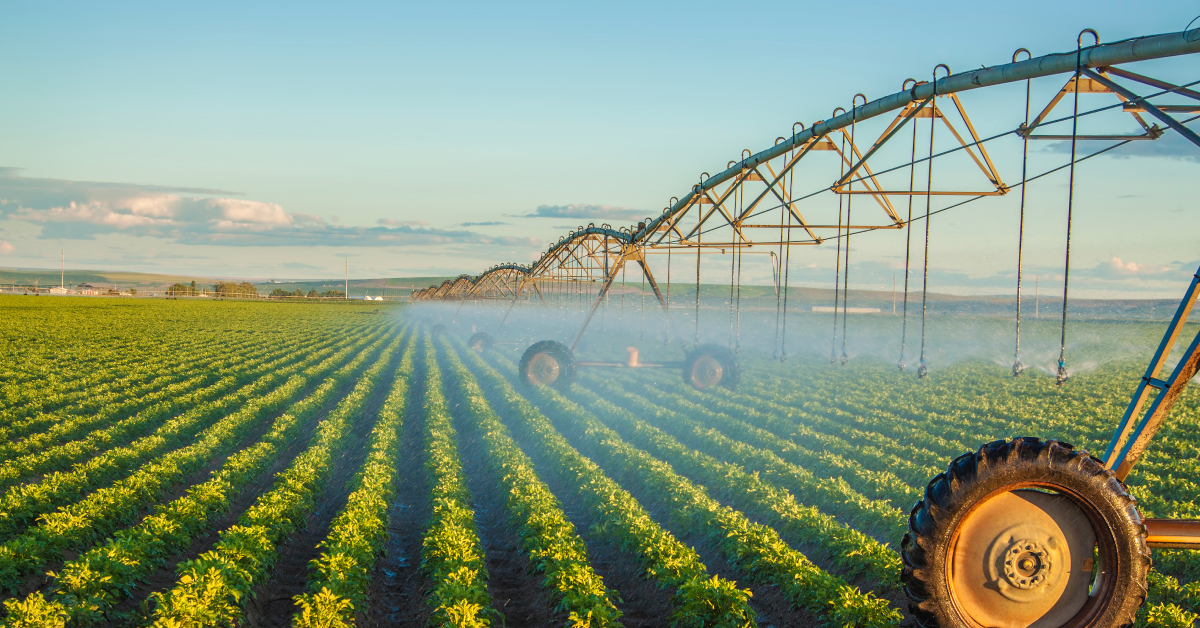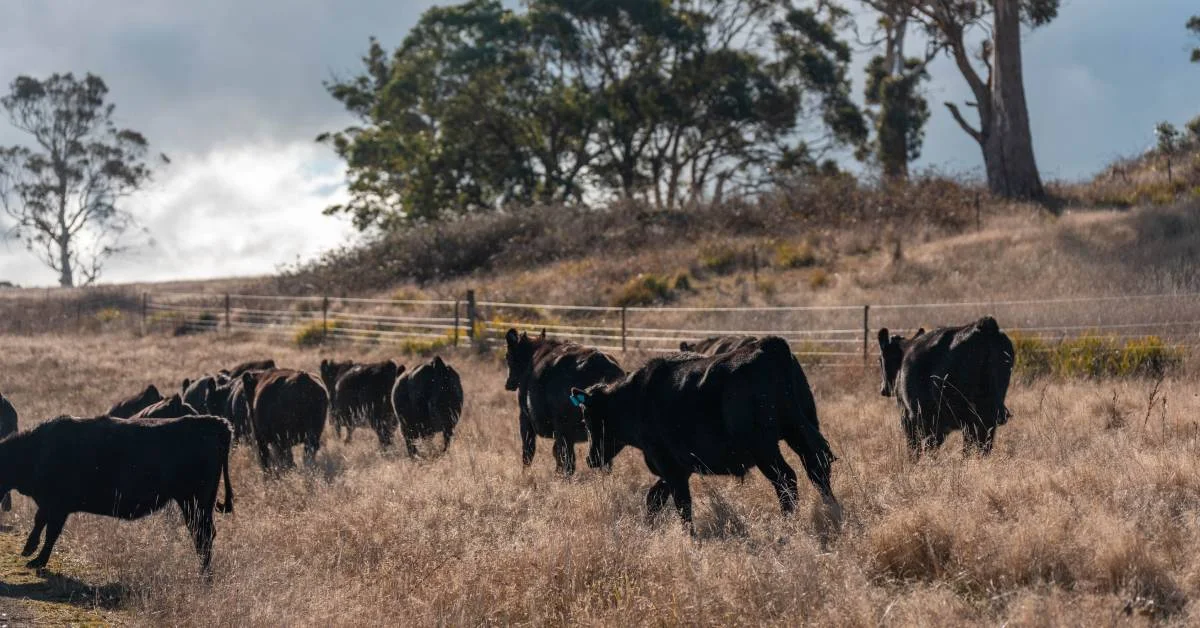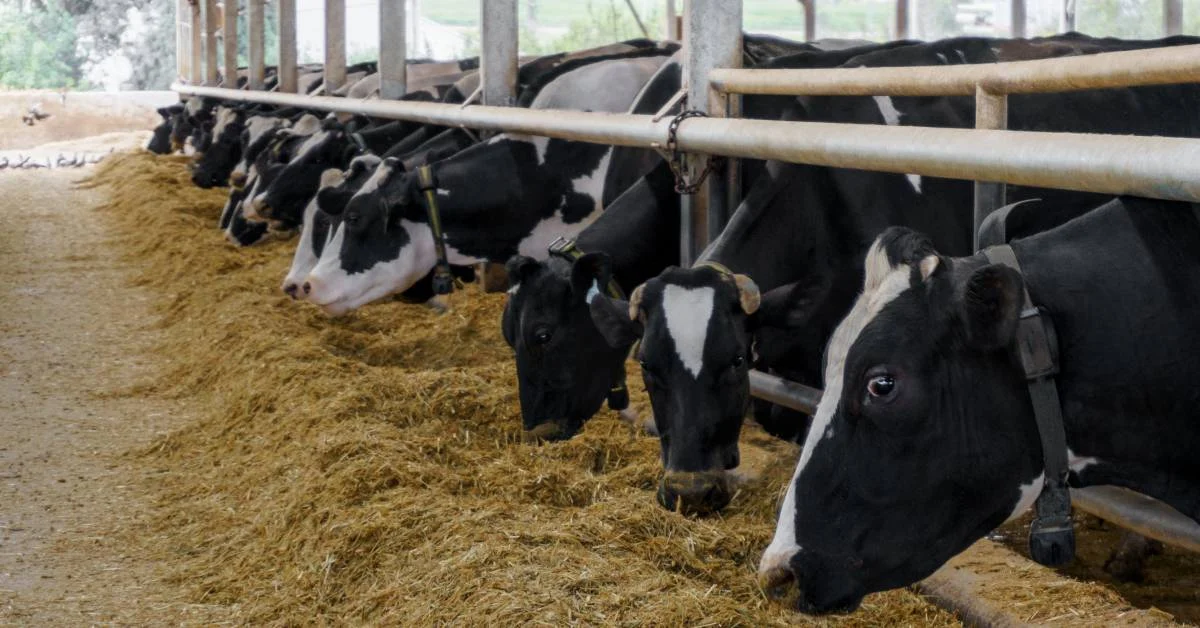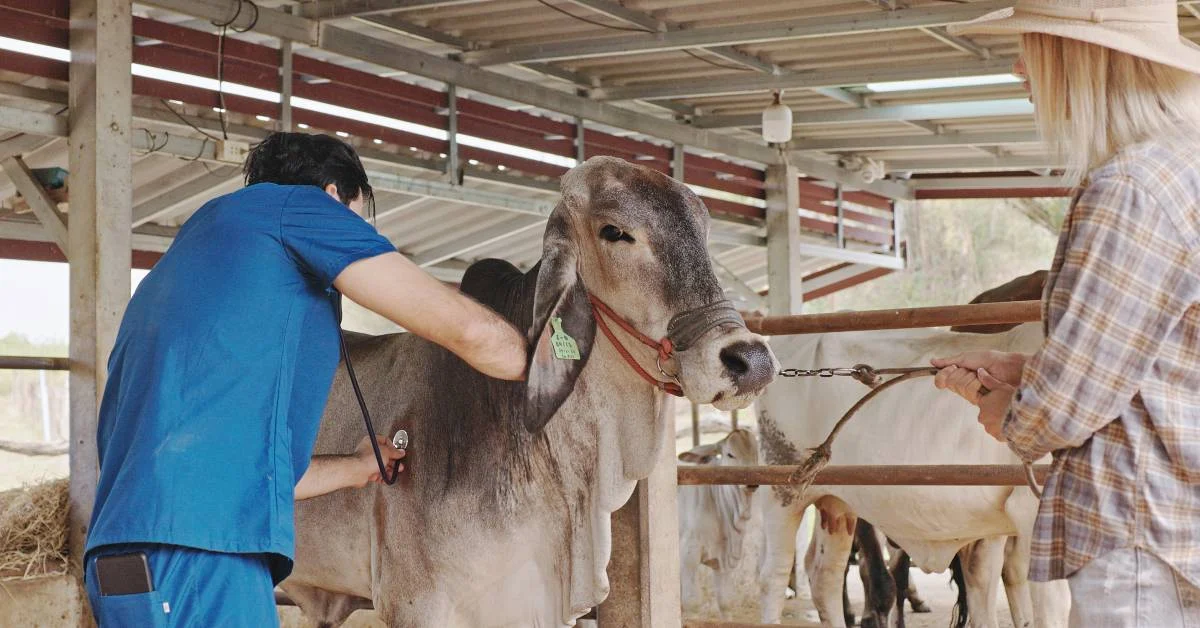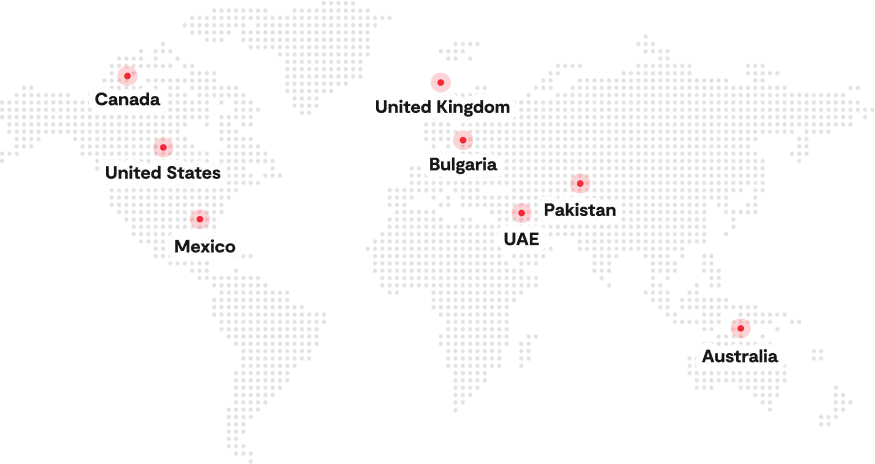Irrigation is the cornerstone of modern agriculture and ensures consistent crop production, especially in regions with insufficient or irregular rainfall. Efficient crop irrigation systems are critical for maximizing crop yield and promoting sustainable farming practices. By delivering the right amount of water at the right time, farmers can optimize the growth and health of their crops, reduce waste, and enhance the overall sustainability of their farming operations.
This comprehensive guide aims to equip you with a thorough understanding of crop irrigation systems. Whether you are a seasoned farmer or a newcomer to agriculture, this guide will provide insights into the different types of crop irrigation systems, their benefits and challenges, and how to choose the right system based on various factors such as climate, soil type, and crop requirements.
Understanding Crop Irrigation Systems
What is Crop Irrigation?
Crop irrigation refers to the artificial application of water to soil or land to assist in crop growth. The practice dates back to ancient civilizations when farmers diverted rivers and streams to water their fields. Over time, crop irrigation systems methods have evolved, incorporating advanced technologies that allow for precise control over water distribution, ensuring that crops receive the necessary amount of moisture for optimal growth.
Why Irrigation is Crucial for Crop Health?
Water is essential for photosynthesis, the process by which plants produce energy. In areas with inadequate rainfall, irrigation compensates for the lack of natural water supply, ensuring crops do not suffer from water stress.
Additionally, proper irrigation supports soil health by maintaining the right moisture balance, which is crucial for nutrient uptake and root development. Farmers can prevent soil erosion, nutrient leaching, and crop failure by managing water effectively, leading to healthier and more productive fields.
Types of Crop Irrigation Systems
1. Surface Irrigation
Overview: Surface irrigation is one of the oldest and most widely used crop irrigation methods. It involves the direct application of water over the soil surface. This method includes flood, furrow, and basin irrigation.
- Flood Irrigation: Water is released onto the fields, allowing it to flow freely over the surface. This method is simple and cost-effective but can lead to water wastage and uneven distribution.
- Furrow Irrigation: Water flows through narrow channels (furrows) dug between crop rows. This method is more efficient than flood irrigation but requires precise leveling to ensure even water distribution.
- Basin Irrigation: Water is retained within a basin or plot of land surrounded by levees. This method is suitable for crops like rice that require standing water.
Pros: Surface irrigation is low-cost and easy to implement, making it accessible to small-scale farmers. It requires minimal infrastructure and can be adapted to various field conditions.
Cons: Water use is less efficient than other methods and can lead to soil erosion and waterlogging if not managed properly.
Ideal Crops and Soil Types: Surface irrigation is best suited for crops like rice, wheat, and sugarcane and works well in clayey or loamy soils with low infiltration rates.
2. Drip Irrigation
Overview: Drip irrigation is a highly efficient system that delivers water directly to the plant’s root zone through a network of pipes, tubes, and emitters. The water is released in small, controlled amounts, minimizing evaporation and runoff. Drip systems consist of mainline, sub-mainlines, lateral lines, and emitters that control the water flow to each plant.
- Advantages: This method significantly reduces water usage, lowers the risk of diseases by keeping foliage dry, and can be automated for precise control.
- Best Practices and Maintenance Tips: Check emitters regularly for clogs, ensure proper filtration to avoid blockages, and monitor the system for leaks.
Pros: Drip irrigation is water-efficient, reduces weed growth, and promotes uniform crop growth. It is particularly beneficial in arid regions where water conservation is critical.
Cons: Initial setup costs can be high, and the system requires regular maintenance to prevent clogging and ensure efficient operation.
Ideal Crops and Soil Types: This system is perfect for high-value crops like vegetables, fruits, and flowers. It works well in sandy soils with high infiltration rates.
3. Sprinkler Irrigation
Overview: Sprinkler irrigation mimics natural rainfall by distributing water through a network of pipes and sprinklers that spray water over the crops. Various sprinkler systems include center pivot, lateral move, and portable systems.
- Types:
- Center Pivot: A central pivot point with rotating arms that water the crops in a circular pattern.
- Lateral Move: Sprinklers mounted on a linear system that moves across the field.
- Portable Sprinklers: Easily movable systems suitable for small fields.
Pros: Provides uniform water distribution, is versatile, and can be used on various terrains and crop types.
Cons: Prone to water loss through evaporation, especially in hot and windy conditions. The system can be costly to install and operate, especially for large fields.
Ideal Crops and Soil Types: Sprinkler irrigation suits various crops, including grains, vegetables, and orchards. It works best in loamy soils with moderate infiltration rates.
4. Subsurface Irrigation
Overview: Subsurface irrigation involves applying water below the soil surface through buried drip lines or natural water tables. The water is delivered directly to the root zone, minimizing evaporation and surface runoff.
- Benefits: This method conserves water, reduces weed growth, and improves plant nutrient uptake.
- Challenges: Installation can be complex and costly, and the system requires regular monitoring to prevent clogging and ensure even water distribution.
Pros: Subsurface irrigation is highly water-efficient, reduces weed competition, and minimizes evaporation losses. It is ideal for areas with limited water resources.
Cons: The high installation and maintenance costs can be prohibitive for some farmers. The system also requires precise management to avoid root intrusion and clogging.
Ideal Crops and Soil Types: This method suits high-value crops like vegetables, fruits, and vineyards. It works well in sandy or loamy soils with good drainage.
5. Localized Irrigation
Overview: Localized irrigation involves delivering water to specific field areas, such as the root zones of individual plants. This method includes micro-sprinklers and bubblers. Localized crop irrigation systems are designed for precision agriculture, allowing farmers to target specific plants or zones within a field.
- Benefits: These systems are highly efficient, reducing water wastage and improving crop yields by providing precise water delivery.
- Ideal Scenarios and Crops: Localized irrigation is suitable for orchards, vineyards, and other high-value crops where precise water management is crucial.
Pros: high water use efficiency, reduced disease risk, and adaptability to various crop types and field conditions.
Cons: The system can be expensive to install and maintain, requiring careful management to ensure optimal performance.
Ideal Crops and Soil Types: This method is well-suited for orchards, vineyards, and other high-value crops. It works best in well-drained soils with high infiltration rates.
6. Automated Irrigation Systems
Overview: Automated crop irrigation systems integrate advanced technologies such as IoT (Internet of Things) and smart sensors to optimize water delivery. In real-time, these systems use sensors, controllers, and automated valves to monitor soil moisture levels, weather conditions, and crop water requirements.
- Benefits: Automated systems offer significant labor savings, improve water use efficiency, and reduce the risk of human error.
- Future Trends in Automation: The future of irrigation lies in further integration with AI and machine learning, which will enable predictive irrigation scheduling and more precise water management.
Pros: Automated systems enhance water efficiency, reduce labor costs, and improve crop health by providing timely and accurate irrigation.
Cons: The high initial investment and ongoing maintenance costs can be barriers for some farmers. The system’s complexity also requires technical expertise for installation and operation.
Ideal Crops and Soil Types: Automated irrigation suits various crops, from fields to high-value horticultural crops. It works best in fields with varied topography and soil types.
Factors to Consider When Choosing an Irrigation System
Climate and Weather Patterns
The choice of an irrigation system should align with the regional climate. In arid regions, water-efficient systems like drip or subsurface irrigation are ideal. In contrast, areas with high rainfall might benefit more from surface or sprinkler systems. Additionally, it’s essential to consider the system’s adaptability to changing weather conditions, such as droughts or heavy rains.
Soil Type
Soil characteristics, including texture, structure, and permeability, play a significant role in determining the most suitable irrigation method. For instance, sandy soils, which have high infiltration rates, are best paired with drip or subsurface crop irrigation systems, while clayey soils, which retain water, may benefit from surface irrigation.
Crop Type
Different crops have varying water requirements, and the chosen irrigation system should cater to these needs. High-value crops like fruits and vegetables often require precise water management, making drip or localized crop irrigation systems ideal. On the other hand, staple crops like wheat and maize can thrive with surface or sprinkler irrigation.
Water Availability and Quality
Water availability and quality are crucial factors. Regions with limited water resources should opt for systems that maximize water use efficiency, such as drip or subsurface irrigation. These systems minimize water wastage and ensure that every drop is utilized effectively.
Additionally, water quality, including its salinity and presence of contaminants, can influence the choice of irrigation method. For example, saline water may not be suitable for certain irrigation types, and filtration systems might be required to prevent clogging in drip systems.
Cost and Budget and Considerations
Farmers must consider the initial investment, operating costs, and maintenance expenses. While drip and automated systems may offer high water efficiency and precise control, they often come with higher setup and maintenance costs.
Surface irrigation might be more affordable initially but could incur higher long-term costs due to water wastage and the need for frequent manual intervention. To make a financially sound decision, it’s essential to weigh these factors against the expected benefits.
Challenges in Crop Irrigation
Water Scarcity and Management
Water scarcity is one of the most pressing challenges in incorporating crop irrigation systems, especially in arid and semi-arid regions. Efficient water management is crucial to ensuring that crops receive the necessary moisture without depleting available water resources.
- Strategies for Efficient Water Use: To combat water scarcity, farmers can implement techniques such as scheduling irrigation during more excellent parts of the day to minimize evaporation, using mulching to retain soil moisture, and employing water-efficient irrigation methods like drip or subsurface irrigation. Additionally, monitoring soil moisture levels with sensors can help optimize water use by irrigating only when necessary.
- Role of Technology in Water Conservation: Modern technology plays a significant role in addressing water scarcity. IoT-based crop irrigation systems with sensors and real-time data analytics allow for precise water delivery, reducing waste. Advanced forecasting models can also predict weather patterns, enabling farmers to plan irrigation schedules that align with natural rainfall, further conserving water.
Salinization
Salinization, the accumulation of salts in the soil, is another challenge that affects the incorporation of crop irrigation systems, particularly in areas with poor drainage or where groundwater is used excessively. High salt concentrations can hinder plant growth, reduce crop yields, and render soil infertile.
Causes and Impact on Crop Health: Salinization occurs when water containing dissolved salts evaporates or is absorbed by plants, leaving the salts behind in the soil. Over time, this can lead to a toxic environment for crops, stunting their growth and reducing productivity.
Solutions and Preventive Measures: To prevent and mitigate salinization, farmers can implement practices such as flushing the soil with high-quality water to leach out salts, improving drainage systems to avoid salt accumulation, and selecting salt-tolerant crop varieties. Maintaining a balanced irrigation schedule that avoids excessive water use can also help manage salinity levels.
System Maintenance
Regular maintenance of crop irrigation systems is essential to ensure their efficiency and longevity. However, maintenance can be challenging, particularly for systems that cover large or remote areas.
- Common Maintenance Challenges: Clogging of drip emitters, leaks in pipelines, and wear and tear of components are common issues that can reduce the efficiency of crop irrigation systems. Inadequate maintenance can lead to uneven water distribution, waste, and increased operational costs.
- Tips for Extending the Lifespan of Irrigation Systems: To keep crop irrigation systems in optimal condition, regular inspections should be conducted to detect and repair leaks, clean and replace clogged emitters, and ensure that filters function correctly. A preventive equipment maintenance schedule can also help identify potential issues before they escalate, ensuring consistent and reliable irrigation.
Innovations and Trends in Irrigation Systems (2024 Update)
Precision Irrigation
Precision irrigation represents a significant leap forward in modern farming. It uses advanced technologies to optimize water use and improve crop yields.
- Role of AI and Data Analytics: Artificial intelligence (AI) and data analytics are revolutionizing irrigation practices. By analyzing data from weather forecasts, soil moisture sensors, and crop growth models, AI-driven systems can make real-time adjustments to irrigation schedules, ensuring that crops receive the exact amount of water they need at the right time.
- Examples of Precision Irrigation Technologies: Technologies such as variable rate irrigation (VRI), which allows farmers to apply different amounts of water to other parts of a field, and remote sensing tools that monitor crop health and soil moisture from satellites or agriculture drones, are examples of precision irrigation in action. These innovations help farmers reduce water use, lower costs, and increase productivity.
Sustainable Irrigation Practices
Sustainability is a growing concern in agriculture, and crop irrigation systems are evolving to meet these demands.
- Low-Energy Precision Application (LEPA): LEPA is an irrigation technique that minimizes water loss by delivering water close to the soil surface at low pressure, reducing evaporation and runoff. This method is particularly effective in conserving water and energy, making it a sustainable choice for large-scale farming.
- Integration of Renewable Energy in Irrigation: Renewable energy sources, such as solar and wind power, are being used to operate crop irrigation systems, and they are gaining traction. Solar-powered pumps, for instance, provide a sustainable solution for irrigation in remote areas with limited access to electricity, reducing reliance on fossil fuels and lowering greenhouse gas emissions. When integrated with greenhouse management software, these energy-efficient systems can be optimized even further—automating irrigation schedules, monitoring environmental conditions, and ensuring precise water usage for maximum sustainability and crop health.
Climate-Resilient Irrigation Systems
As climate change leads to more frequent and severe weather events, the need for climate-resilient crop irrigation systems is becoming increasingly important.
- Designing Systems to Withstand Extreme Weather: Crop irrigation systems are designed to be more resilient to extreme weather conditions, such as droughts, floods, and storms. This includes incorporating flexible components that can withstand high winds, using flood-resistant pumps, and designing systems that can be easily adjusted to accommodate changes in water availability.
Irrigation in Urban Farming
Urban farming is rising as cities seek to improve food security and reduce their environmental footprint. Crop irrigation systems are adapting to meet the unique needs of urban agriculture.
- Adaptation of Systems for Small-Scale and Vertical Farming: In urban environments, where space is limited, crop irrigation systems are being tailored for use in small-scale and vertical farming. Drip irrigation and hydroponic systems are well-suited for these settings, providing efficient water use in confined spaces. Innovations such as automated crop irrigation systems that can be controlled via smartphones are also making urban farming more accessible and sustainable.
Conclusion
Irrigation is not just about delivering water to crops; it’s about optimizing resources, ensuring sustainability, and adapting to a changing climate. Once you understand the different systems available and stay informed about the latest advancements, farmers can make informed decisions that enhance their crop production and contribute to a more sustainable future for agriculture.
FAQs
What is the Most Water-Efficient Irrigation System?
Drip irrigation is considered the most water-efficient system. It delivers water directly to the root zone, minimizing evaporation and runoff.
How Do I Choose the Right Irrigation System for My Farm?
When selecting an irrigation system, consider factors such as climate, soil type, crop requirements, water availability, and budget.
Can Irrigation Systems Be Automated?
Modern irrigation systems can be automated using IoT technology, sensors, and AI, allowing for precise water management based on real-time data.
What are the Main Challenges in Maintaining An Irrigation System?
Clogging, leaks, and component wear and tear are common challenges. Regular maintenance and preventive measures can help extend the system’s lifespan.
How Does Climate Change Affect Irrigation Practices?
Climate change can lead to more extreme weather patterns, making it necessary to design irrigation systems resilient to droughts, floods, and other climatic events.

